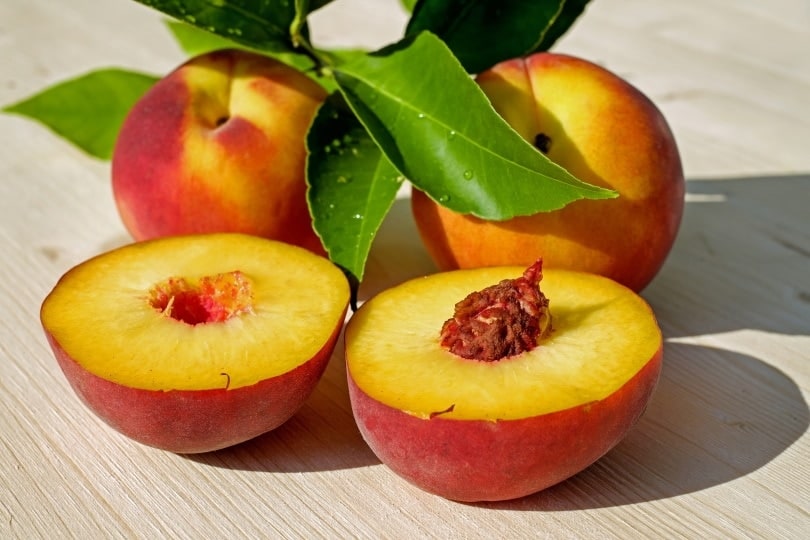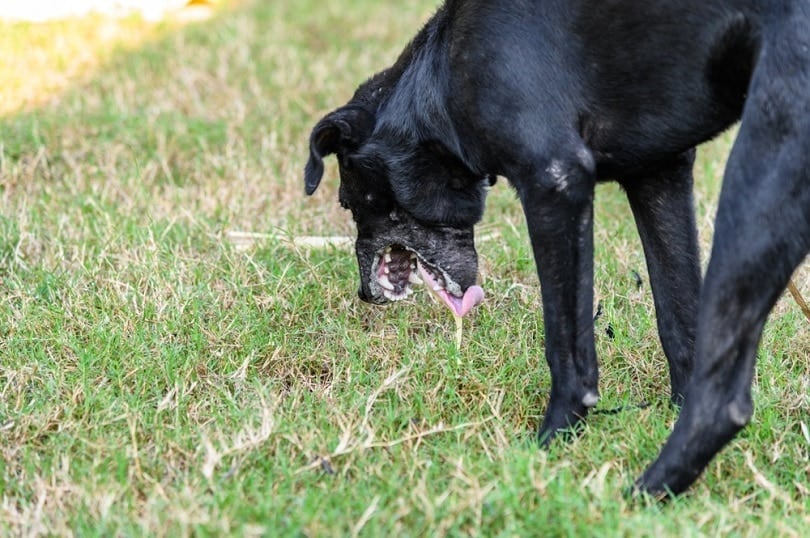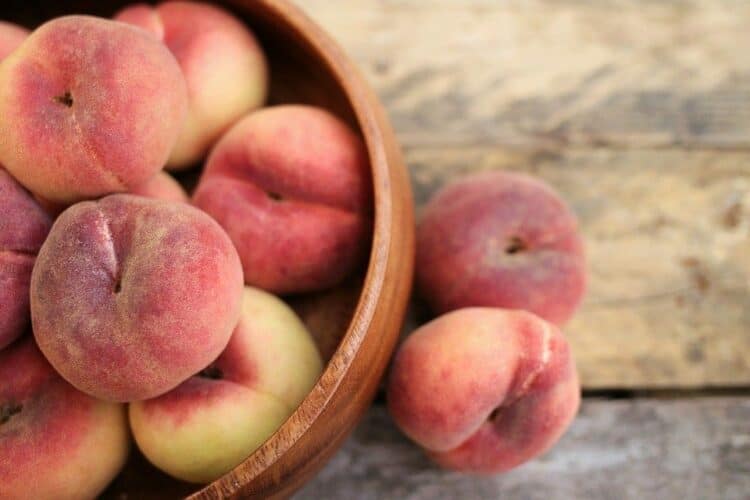So, your dog ate a peach. And now, here you are, wondering if you should worry or not.
The good news? Peaches are generally safe for dogs as long as they don’t consume the pit, stem, or leaves. They can even be a good option as a healthy snack. But before you toss a peach over to your dog, there are precautions you want to take first.
Let’s not waste any more time. Let’s explore this subject a little further, shall we?
What Happens When a Dog Eats a Peach?
The ASPCA lists peaches (Prunus persica) as toxic to dogs, cats, and horses. Other fruits like plums, cherries, and apricots belong in this category.
Before you panic, let’s clarify something. The flesh of the fruit (the part we eat) is okay to offer your dog every once in a while. This tasty fruit can be an excellent snack option for your dog in small amounts.
However, it’s the stem, leaves, and pit that cause problems.
The stem, leaves, and pit contain cyanide, a fast-acting chemical that can be deadly in specific doses. Your dog would have to consume several peaches to cause cyanide poisoning, so don’t worry if your dog has eaten one.
It’s okay if your dog eats only the flesh since this part of the fruit contains much less cyanide. If your dog has recently eaten a peach pit, stem, or leaf, you should call your veterinarian to avoid cyanide poisoning.

Cyanide Poisoning in Dogs
Knowing your dog has cyanide poisoning depends on how much of the peach your dog ate, your dog’s weight, and how long ago your dog ate the peach. Usually, symptoms show within 15–20 minutes, but this entirely depends on how much cyanide is in your dog’s body.
Some signs of cyanide poisoning in dogs include:
- Red mucous membranes
- Dilated pupils
- Difficulty breathing
- Dizziness
- Vomiting
- Salivation
- Panting
- Restlessness
- Weakness
- Shock
You shouldn’t need to worry about these symptoms if your dog eats the peach’s flesh. As long as you avoid the pit, stems, and leaves, your dog will be just fine!
If you do notice these symptoms, pick up the phone and give your veterinarian a call. It’s best to not wait, so call your emergency vet if needed.

Fruits That Are Bad for Your Dog
We want to make sure you and your dog stay safe, so here are some fruits that your dog shouldn’t eat.
- Avocado: The leaves, bark, seeds, skin, and pit all contain persin, a chemical that causes vomiting and diarrhea in dogs. The flesh of the avocado may cause gastrointestinal upset and weight gain.
- Grapes and Raisins: These fruits can cause kidney damage. It’s unclear how many grapes or raisins are dangerous, so take your pet to the vet immediately if they eat a grape or raisin.
- Tomatoes: A fully ripened tomato is fine to feed your dog every once in a while, but avoid the green parts. The green parts of the tomato contain solanine, which is also toxic to dogs.
Wrapping It Up
Peaches are okay to feed your dog as long as it’s in moderation and they only eat the flesh. Thank goodness, because peaches are delicious! As long as you avoid the stems, leaves, and pit, your dog can enjoy fresh peaches, rinsed canned peaches, or fun homemade peach treats!
Featured Image Credit: Pixabay














